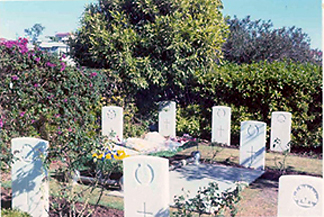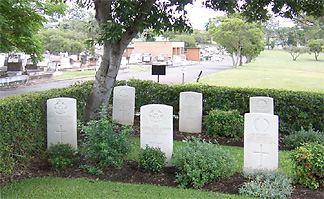 |
 |
||||||||||||||||||||
|
Flying Officer Neville Hargreaves Oddie 400541 RAAF: KAO 13 February 1942 The RAAF contribution continued... John and Barbara, and Peter and Rosemary, first kindly made much of their carefully maintained collection about Neville Hargreaves Oddie available, even as Darwin commemorated the 60th anniversary of its first air raid. Neville was a cousin of John and Peter’s father, Jim Oddie. Peter and Rosemary farm the property once owned by Neville and his sister Margaret in the Central Highlands district of country Victoria. In 2012, John Oddie AM CSC retired in the rank of Air Commodore after a long and distinguished RAAF career. Barbara also served in the RAAF, in the early 1980s. She gathers the Oddie family history together, from records variously held by the family and elsewhere.
A fine formal portrait of the sort taken to mark the big occasions: graduation, commissioning, or departure for overseas service—and thus very often undated. Photographed by the then well-known Broothorn Studios of Collins St Melbourne, Oddie wears the uniform of an RAAF officer. Commissioned in early June 1941 shortly after completing his Observer training in Australia, he was immediately posted to 1 Embarkation Depot Sydney. By late June, he was at sea bound for the Middle East and RAF service. Taken together, the date looks fairly certain to be early June 1941. The framed print, embossed with the Broothorn stamp and with the usual impenetrable order number on the rear, had been quietly resting in an old buffet in a back room at the family property until recently retrieved by Barbara. An amazing find indeed. The Oddies have dipped generously (and more than once) into their collection of family memorabilia, from which material it has been a pleasure to draw together this account of Neville’s war-time RAAF and RAF service, while also calling upon RAAF personnel and casualty files from the National Archives of Australia. Some background Posted to 1 ITS Somers on the Mornington Peninsula South of Melbourne, his nominally 12 week Initial Training School course ended in early December 1940. For his three month Observer’s course, Neville was posted to No 1 Air Observer’s School, RAAF Cootamundra in Western New South Wales. In early March 1941, a member of a Flight of 50 on 7 Course, he passed a stiff set of exams after a lot of classwork and numerous air navigation exercises of 300 or 400 miles by day and by night, mainly in Avro Ansons. His next posting was to No. 1 Bombing and Air Gunnery School, Evans Head, where he had completed the eight week bomb-aiming course for Observers by the start of May 1941. 1 BAGS trained many an RAAF airman, mainly in Fairey Battles: Oddie’s crewmate Joe Payne had been posted there, too, for his 4 week WOp/AG training in August 1940. JB Keeping also trained there, completing his WOp/AG course just as Oddie was finishing his Cootamundra stint. For the remainder of May 1941, Oddie was rounding out his overall Observer’s course-work under the EATS syllabus requirement of some 8 months training, by attending No 7 Air Observers Course at 1 Air Navigation School, RAAF Parkes in western New South Wales. At 1 ANS, he passed out Dux of the 4 week Astro Navigation course.
His achievement was recognised, in the custom of those days, with the award of a book. Graced with a magnificent hand-coloured and drawn bookplate, Cutlack’s Australian Flying Corps (Volume VIII of the Official History of Australia in the War of 1914-1918) was presented to NH Oddie by the Rotary Club of Parkes. I hardly need add that the book today lies safe in the collection of John and Barbara Oddie.
At No. 1 AOS Cootamundra February 1941: Keith Birdsey 400523 subsequently served with 11 Squadron RAF in the Far East, only to be killed in a flying accident 5 April 1943. Denys Golder 400531 survived the war, marching out a Flight Lieutenant 9 September 1946 (this additional information by courtesy of David Vincent, who holds a dated copy of the print). By the first week of June 1941, Pilot Officer Oddie found himself posted to 1 Embarkation Depot Ascot Vale. Also among the draft that then departed Sydney on 27 June were P/Os Cuttiford and Mackay. They were bound for Middle East Pool, Egypt, then to Kenya and 70 OTU at Nakuru, and on to 211 Squadron.
Jack Howe, self [Cuttiford], Nev Oddie, Joe Payne, Dicky Martin, Mac [Mackay], “Ging” Brown (WR Cuttiford) All RAAF men. As shown in Reg Cuttiford’s collection. Indeed, a number of RAAF Officers and NCO aircrew came to the Squadron from the late 1941 Blenheim Operations Course at Nakuru. It was there that Neville Oddie crewed up with F/O Graham Mackay 404566 from Queensland as his pilot and F/O Joe Payne 406150, former wool classer of Western Australia, as their Wireless Operator/Gunner. Mackay was also a mate of fellow Queenslander F/O Bill Cuttiford 404561: the two had enlisted on the same day, 11 October 1940, at 3 Recruiting Centre Brisbane. Promoted Flying Officer in December, Oddie was posted to 211 Squadron on 28 December 1941 with Mackay and Payne, as the Squadron worked up to operational readiness for the long flight to the Far East and Sumatra in January 1942. Australian aircrew were a strong presence in the Squadron’s early 1942 Far East campaign, almost all of them via the Middle East and 70 OTU or 72 OTU. Sadly, Neville and his crewmates were on operations for only a very brief period in Sumatra before being posted missing, while returning from the Squadron attempt to attack the Japanese invasion force in Banka Strait on 13 February 1942. Long reported as missing, the site of their loss was only found 25 years later. Returned to the family at the end of the war, Neville Oddie’s personal effects included photographs from his service overseas but the collection did not extend to his time in Sumatra.
“NHO in Egypt or Kenya, 1941” The aircraft is a de Havilland DH.89 Dominie apparently in silver dope over all, if not trainer yellow. No rank insignia visible, either within or upon the Sidcot. The DH.89 had a range of 570 miles and a cruising speed of 132mph - an endurance of about 4 hours 20 min. Tired and somewhat ruffled after 700 miles of watching the mainplanes twitching, it looks as though NHO might have fancied a short interlude for refreshment. Well over 5 hours flying time in a DH.89 must have made for a very long day. While the distance itself might be seen as confirming the attribution, the flying suit and lack of camouflage are together faintly suggestive of other places, other times, possibly even Australia. In Aug—Sep 1940, the RAAF had impressed a number of DH.89s into service. Referred to in Australia by their original title, RAAF Dragon Rapides operated until 1944 mainly in the wireless and navigation training roles. On the other hand, there is at least one indication that DH.89s were present in the Middle East. The Kenya Auxiliary Air Unit had one DH.89 on charge in East Africa in 1940—1941: K8 (ex VP-KCR) was used as a transport for example to the April 1941 armistice discussions with the Italians at Diredawa, finished in a local camouflage scheme. While Oddie had spent time at 70 OTU in Kenya, the connection is rather faint. This may be a RAAF Dragon Rapide, but equally may be a RAF Dominie. Only Neville’s Log Book would reveal which aircraft this was.
Wadi Halfa: a staging post on the border of Egypt and the then Sudan, well known to the denizens of Wadi Gazouza.
A Mark I Blenheim, cockpit shrouded against the heat, as fitters work on the starboard engine. The LSC (Light Series bomb carrier) clearly seen against the sunlit sand, abaft the bomb bay. Mid to late 1941, most probably.
[Neville's quarters Mid-East]
My pilot. He does not usually look as grim as this. (Oddie family collection)
The sign originally read Belle Vue but some humourist changed it. However it was quite appropriate as we used to spend quite a while there on our backs with the minimum of clothing. (Oddie family collection)
The tale as told by others [Despite this optimism, other Squadron members held a reasonably firm view that Mackay, Oddie and Payne had gone down in the jungles and swamps that are characteristic of Sumatra’s north-eastern landscape. They were right, though it took over a quarter of a century to find out. See the Sumatra and Java section for the various DPS Casualty Section narratives, including another report from Brown.] 2. Letter from Graham Mackay's Mother & Step-father (extract) 3. Transcript of a letter to step-father of P/O Mackay “Dear Sir, 13 February 1942 On the afternoon of 13 February, W/Cdr RN Bateson led his six serviceable Blenheims on a daylight sweep to seek out the Japanese invasion force, known to be approaching Banka Island to the North of Palembang. They took off at about 15:40 hours that day, late in the North-West monsoon season from the airfield at P2. They were unsuccessful in finding the Japanese, apparently defeated by the afternoon weather. The formation had expected to return to P2 around 18:00 to 18:30hrs but were beset by violent tropical storms, as George Kendrick and his pilot Don Chalmers later recounted (and as Livesey and Baird recorded). Sunset that day was at 18:21hrs local time. Unable to sight P2 in the filthy weather, Bateson & co, with Cuttiford & co and two other crews were able to find their way back North to Palembang P1, landing at about 19:40hrs, the last hour or so in the dark, one aircraft being written off on landing. The remaining two aircraft of the six failed to return. Running low on fuel and unable to sight either P2 or P1 in the poor weather, pilot Don Chalmers had decided that a forced-landing in the sea was the better option, as he later told Ginge Brown. He and his crew ditched in the Java Sea at about 19:50hrs, as Gunner Kendrick recalled later. Their Observer, McInerney, was lost in the impact. Meanwhile, Graham Mackay, Neville Oddie and Joe Payne were in a similar difficulty: a moonless night, violent tropical storms, no sight of either airfield (there had been trouble again with the P2 flare path in the downpour), and fuel running low after four hours in the air. Mackay may also have decided that a forced-landing offered more chance than a bale-out in poor conditions, or perhaps the violent weather overwhelmed them. Oddie’s navigation skills had got them close to P2 but their luck was out. Reporting once back in Australia, Bateson surmised that Mackay & co had put down in the swamps near Palembang P2. A quarter of a century later his assessment turned out to be right. Found Among the recovered items was a gold watch, stopped at 8:05 (or possibly 7:05). The state of the aircraft and the associated material suggested that all the crew had perished in the crash. The Sunday Mail, Brisbane, 11 Feb 1968 page 5 FOUND: Lost for 26 Years He was Flying Officer Graham Gordon Mackay, aged 26, pilot of a Blenheim bomber which disappeared on February 13, 1942. A report from Jakarta published In The Sunday Mail last week said that the remains of three crewmen had been found 30 miles south-west of Talang Betut air base near Palembang. A flying jacket found In the wreckage bore the name GG Mackay. Flying Officer Mackay and his crew went missing while returning to base from convoy patrol duty. They were attached to 211 Squadron RAF. His closest surviving relative is a sister, Mrs LR Douglas of Zillman Road, Hendra. Flying Officer Mackay, who lived at Clayfield, was educated at the Church of England Grammar School and later studied accountancy and was on the staff of the Texaco Oil Company. He trained with the Light Car Unit before winning his wings in the RAAF at Amberley. Flying Officer Mackay's Blenheim was one of six which flew on convoy patrol on the day he was lost. Four of the other aircraft returned to base. A fifth crashed into the sea, and two of the three crew were rescued. The day after Flying Officer Mackay's Blenheim disappeared, his bomber unit was withdrawn in the face of advancing Japanese.” Like many records of the time, the various reports differ in completeness and in detail to some degree. The Squadron record for this period did not survive and the exact identity of the lost aircraft is not recorded in the available RAAF casualty reports. However, in seeking to confirm the identity of the aircraft and its crew, it soon became apparent to the British and Australian authorities that although it was impossible to identify the crew individually, there was no reason to doubt that it was the 211 Squadron Blenheim IV of Graham Mackay, Neville Oddie and Joe Payne. In corroboration, the Ministry of Defence also found that RAF HQ Far East records mentioned a partial serial for a missing Blenheim: 9820. As it turned out, that record was an understandable partial garble. The known lists of Air Ministry serials for Blenheim Mark IV aircraft show a few possible partial matches, none of them exact. Of those possible matches, all but one can be discarded as identified losses elsewhere, leaving a single possible partial solution: Blenheim Mark IV Z9829. Bristol Blenheim Mark IV Z9829 The aircraft is known to have been on 211 Squadron charge in January 1942 as the Squadron prepared to leave for the Far East. At one point it was allotted to the all-RAAF crew of Bev West, George Ritchie and John Keeping, as recorded in Keeping’s personal diary (they were later allotted a different aircraft to ferry to the Far East). No further details of crews or operations for the aircraft are available at present, but the evidence strongly suggests that it was Bristol Blenheim Mark IV Z9829 in which Mackay, Oddie and Payne were lost in Sumatra that night. From the time on the recovered watch, it seems likely the crash had happened at about 20:05hrs on the night of 13 February 1942, about 25 minutes after the main group had landed at P1 and some 15 minutes after Chalmers had ditched his aircraft in the Java Sea. In unravelling these later details of the losses of 13 February, I am indebted to the Oddie family for access to family papers, to Bill Baird for further extracts from his Air Gunner’s Flying Log Book, to Colin Tigwell, ex-RAAF Hercules loadmaster, for access to recent and historical RAAF and MoD correspondence about the 1967 recovery, and to the Kendrick and Summerville families for access to the late George Kendrick’s papers. Sources HMSO London Gazette issues 1941, 1942 Remembered with honour For over a decade the Singapore Memorial had been their only epitaph. In 1970, after consultation with the families, the Commonwealth War Graves Commission arranged for reburial of the scant remains in Lutwyche War Cemetery, Queensland. Graham Mackay’s sister lived in Brisbane. Neville’s sister Margaret Oddie in Victoria was also notified of the service. Margaret kept a simple photograph of the site dated 29 June 1970—the day of the burial. The grave, immediately behind the front row of headstones, is marked at this point only by funeral wreaths and equipment.
The family photograph, below, shows the same corner of the cemetery in 2009. The headstone is in the centre of the row in the foreground.
The boys were not individually identifiable. Thus inseparable in death as in life, Graham, Neville and Joe may lie together in a single plot, commemorated by the simple inscription: An Australian Airman of the 1939—1945 War. The three are also commemorated among the missing on the Singapore Memorial. In Memory of and his crewmates Flying Officer Graham Gordon Mackay 404566 and
www.211squadron.org © D Clark & others 1998—2025 |
||||||||||||||||||||
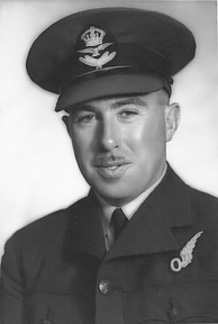
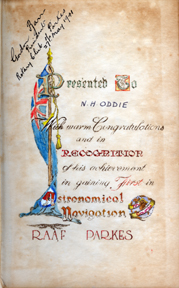
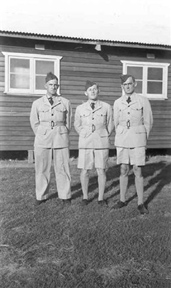
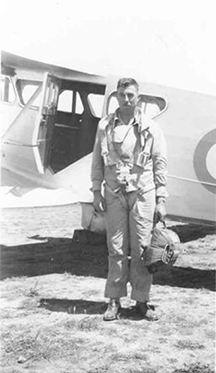
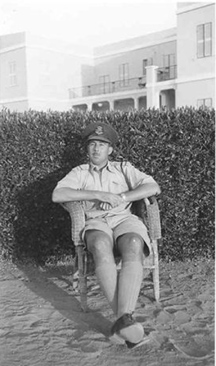
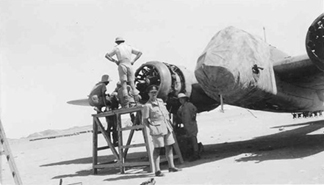
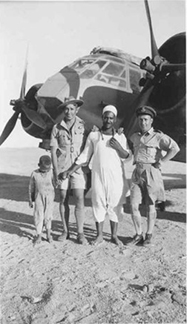
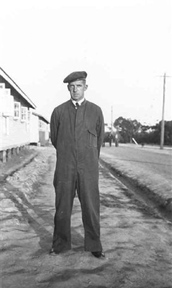
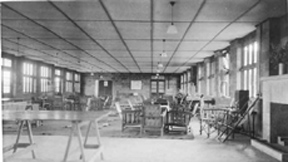
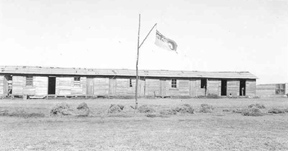
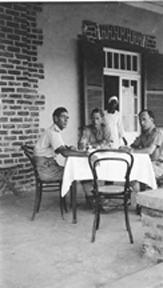
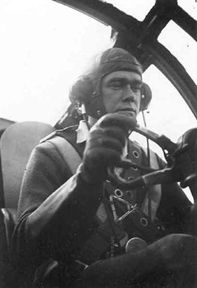
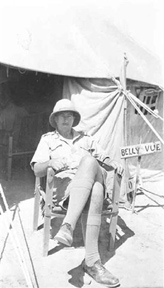
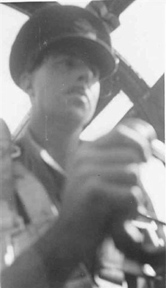
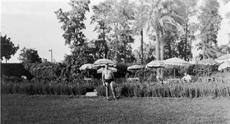
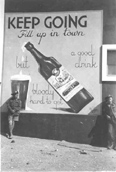
 “A crashed bomber found in the jungle swamps of South Sumatra has revealed the fate of a Brisbane pilot lost in the war against the Japanese 26 years ago.
“A crashed bomber found in the jungle swamps of South Sumatra has revealed the fate of a Brisbane pilot lost in the war against the Japanese 26 years ago. 